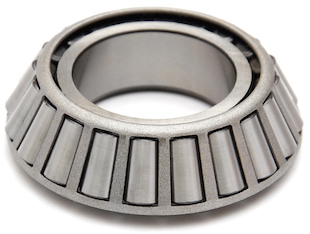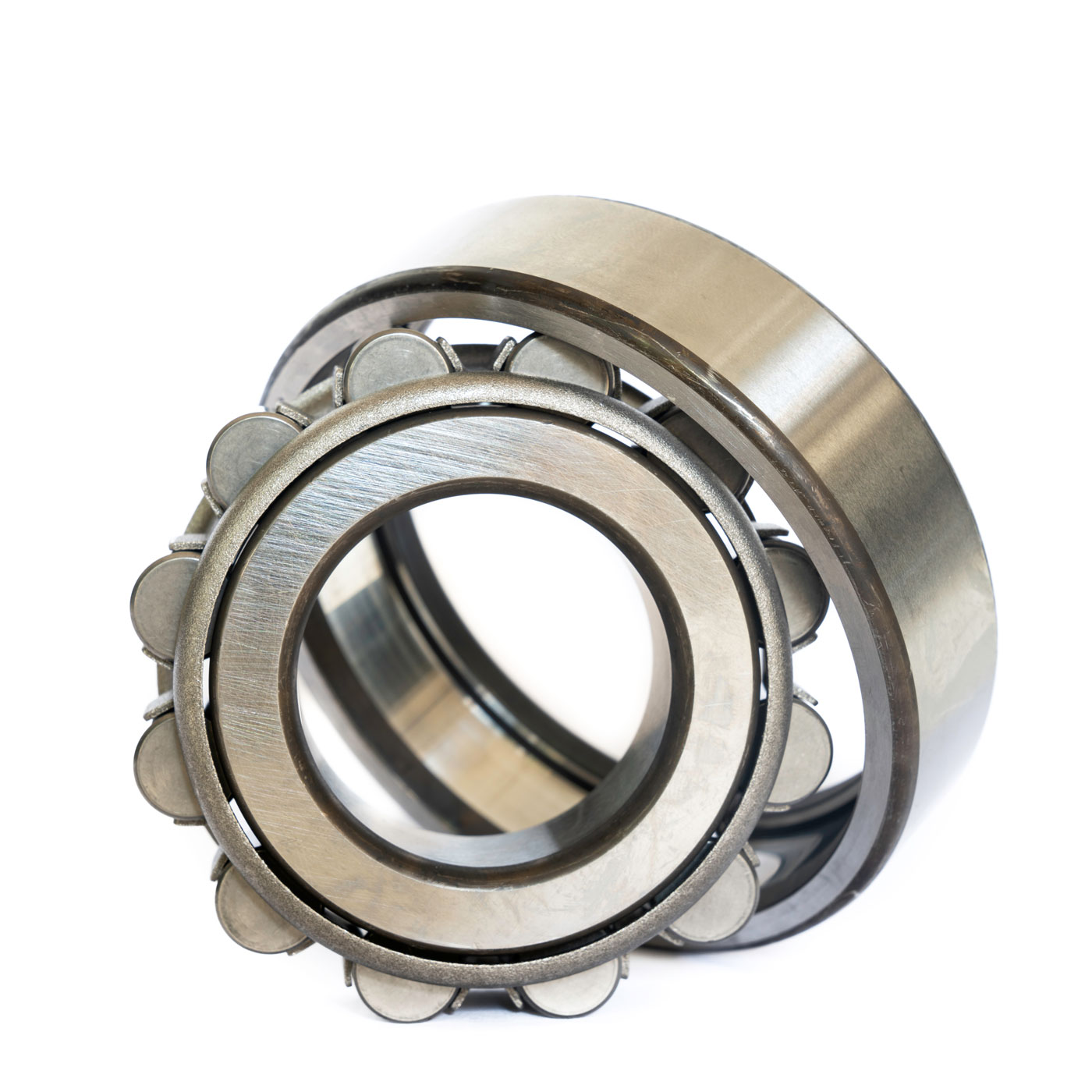How do Tapered Roller Bearings Contribute to the Efficiency of Automotive Wheel Hubs?
Tapered roller bearings play a crucial role in enhancing the efficiency and performance of automotive wheel hubs. They are specifically designed to handle both radial and axial loads, making them ideal for supporting the weight of the vehicle, providing smooth rotation, and ensuring safe and reliable operation. Here’s how tapered roller bearings contribute to the efficiency of automotive wheel hubs:
- Load Distribution:
Automotive wheel hubs experience a combination of radial and axial loads due to the vehicle’s weight, acceleration, braking, and cornering forces. Tapered roller bearings efficiently distribute these loads, preventing localized stress concentrations and ensuring uniform load sharing across the bearing components.
- Smooth Rotation:
Tapered roller bearings enable smooth and low-friction rotation of the wheel hub around the axle. This minimizes rolling resistance, leading to improved fuel efficiency and reduced energy consumption.
- Axial Load Handling:
During cornering and steering maneuvers, automotive wheel hubs encounter axial loads. Tapered roller bearings are designed to handle these axial loads without compromising their ability to carry radial loads, ensuring stable and controlled vehicle handling.
- Reduced Friction and Wear:
The tapered geometry and precision design of the rollers and raceways in these bearings minimize friction between components. This results in reduced wear, lower heat generation, and extended bearing life, contributing to long-term efficiency.
- Reliable Performance:
Tapered roller bearings are known for their durability and resistance to wear and fatigue. They maintain their performance even under harsh operating conditions, ensuring consistent and reliable wheel hub operation.
- Enhanced Safety:
The efficiency of tapered roller bearings directly impacts the vehicle’s stability and control. Properly functioning bearings prevent issues like wheel wobbling, uneven tire wear, and compromised steering, contributing to safe driving conditions.
- Easy Replacement:
When maintenance or replacement is required, tapered roller bearings can be easily installed and removed. This simplifies the servicing process and reduces vehicle downtime.
- Reduced Maintenance Costs:
The long service life and reliability of tapered roller bearings minimize the need for frequent maintenance and replacement, reducing overall maintenance costs for the vehicle owner.
- Optimized Performance:
Efficient wheel hubs with properly functioning tapered roller bearings lead to improved vehicle performance, including better acceleration, braking, handling, and overall drivability.
Overall, tapered roller bearings contribute to the efficiency and effectiveness of automotive wheel hubs, enhancing vehicle performance, safety, and longevity.
Can cylindrical roller bearings be used in both radial and axial load applications?
Yes, cylindrical roller bearings are capable of supporting both radial and axial loads. They are designed to handle primarily radial loads but can also withstand certain axial loads depending on the bearing’s configuration and design features. Let’s delve into the details:
- Radial Load Capacity:
Cylindrical roller bearings are primarily designed to carry radial loads, which are perpendicular to the shaft’s axis. The cylindrical rollers distribute the load evenly along their length and transmit it to the raceways. The rings of the bearing, both the inner and outer rings, provide structural support and maintain the position of the rollers. The cylindrical shape of the rollers enables efficient load distribution, making cylindrical roller bearings suitable for applications with significant radial loads.
- Axial Load Capacity:
While cylindrical roller bearings are primarily designed for radial loads, they can also accommodate certain axial loads depending on their specific design features. There are different types of cylindrical roller bearings that offer varying degrees of axial load capacity:
- Single-row cylindrical roller bearings:
These bearings can accommodate limited axial loads in one direction. The axial load-carrying capacity is determined by the bearing’s internal design, including the shoulder and rib configurations on the inner and outer rings. Single-row cylindrical roller bearings with a full complement of rollers, where the cage is removed, can provide higher axial load capacity at the expense of reduced speed capability.
- Double-row cylindrical roller bearings:
Double-row cylindrical roller bearings have increased axial load-carrying capacity compared to single-row bearings. They can support axial loads in both directions and are often used in applications where combined radial and axial loads are present. Double-row cylindrical roller bearings have additional features such as increased rib height, modified internal clearance, or a different cage design to enhance their axial load-carrying capability.
- Multi-row cylindrical roller bearings:
Multi-row cylindrical roller bearings, such as four-row or six-row designs, offer even higher axial load capacity. These bearings are commonly used in heavy-duty applications where extremely high radial and axial loads need to be accommodated, such as rolling mills, crushers, or gearboxes.
It’s important to consider the specific load requirements of the application when selecting cylindrical roller bearings. Factors such as the magnitude and direction of the loads, the bearing’s speed capability, and any potential misalignment should be taken into account to ensure the bearing is properly sized and can handle the anticipated loads.
In summary, while cylindrical roller bearings are primarily designed to carry radial loads, they can also support certain axial loads depending on their design. Single-row, double-row, and multi-row cylindrical roller bearings offer varying degrees of axial load capacity, allowing them to be utilized in applications with combined radial and axial loads.
How do cylindrical roller bearings differ from other types of roller bearings?
Cylindrical roller bearings possess distinct characteristics that set them apart from other types of roller bearings. Let’s examine the key differences between cylindrical roller bearings and other common roller bearing types:
- Design and Structure:
Cylindrical roller bearings feature cylindrical rollers that have a high length-to-diameter ratio. This design allows them to accommodate high radial loads and moderate thrust loads. In contrast, other types of roller bearings, such as spherical roller bearings or tapered roller bearings, have different roller shapes and configurations tailored for specific load and application requirements.
- Load Capacity:
Cylindrical roller bearings excel in handling radial loads. Their cylindrical roller arrangement and large contact area with the raceways enable them to distribute loads evenly along the rollers’ length. This characteristic makes cylindrical roller bearings suitable for applications where the primary load is radial. In comparison, other roller bearing types may be better suited for applications with different load orientations or combinations of radial and axial loads.
- Thrust Load Capability:
While cylindrical roller bearings can accommodate moderate axial loads, they are primarily designed for radial load-carrying capacity. On the other hand, thrust roller bearings, such as spherical roller thrust bearings or tapered roller thrust bearings, are specifically designed to handle predominantly axial loads. These thrust bearings have different roller arrangements and structures optimized for axial load resistance.
- Internal Clearance:
Cylindrical roller bearings offer a range of internal clearances, which is the space between the rolling elements and raceways when no external load is applied. The internal clearance affects factors such as running accuracy, thermal expansion, and the ability to accommodate misalignment or axial displacement. In contrast, other roller bearing types may have different clearance options or incorporate specific features, such as preloading, to optimize performance in their respective applications.
- Application Diversity:
Cylindrical roller bearings find extensive use in various machinery applications, including electric motors, gearboxes, pumps, and compressors. However, other roller bearing types have their own advantages and are commonly employed in specific industries or applications. For instance, needle roller bearings are suitable for applications with limited radial space, while crossed roller bearings are commonly used in precision machinery that requires high positioning accuracy.
- Operating Speed:
Cylindrical roller bearings can operate at high speeds, depending on their design and internal clearance. Manufacturers provide speed ratings and guidelines to ensure proper selection and operation within the bearing’s speed limits. Other roller bearing types may have different speed capabilities based on their specific design features, such as the shape of the rollers, cage design, or lubrication requirements.
Understanding the differences between cylindrical roller bearings and other types of roller bearings is crucial for selecting the appropriate bearing for a given application. Factors such as load requirements, load orientation, speed, space limitations, and environmental conditions should be carefully considered to ensure optimal bearing performance and longevity.
editor by CX 2024-04-26




